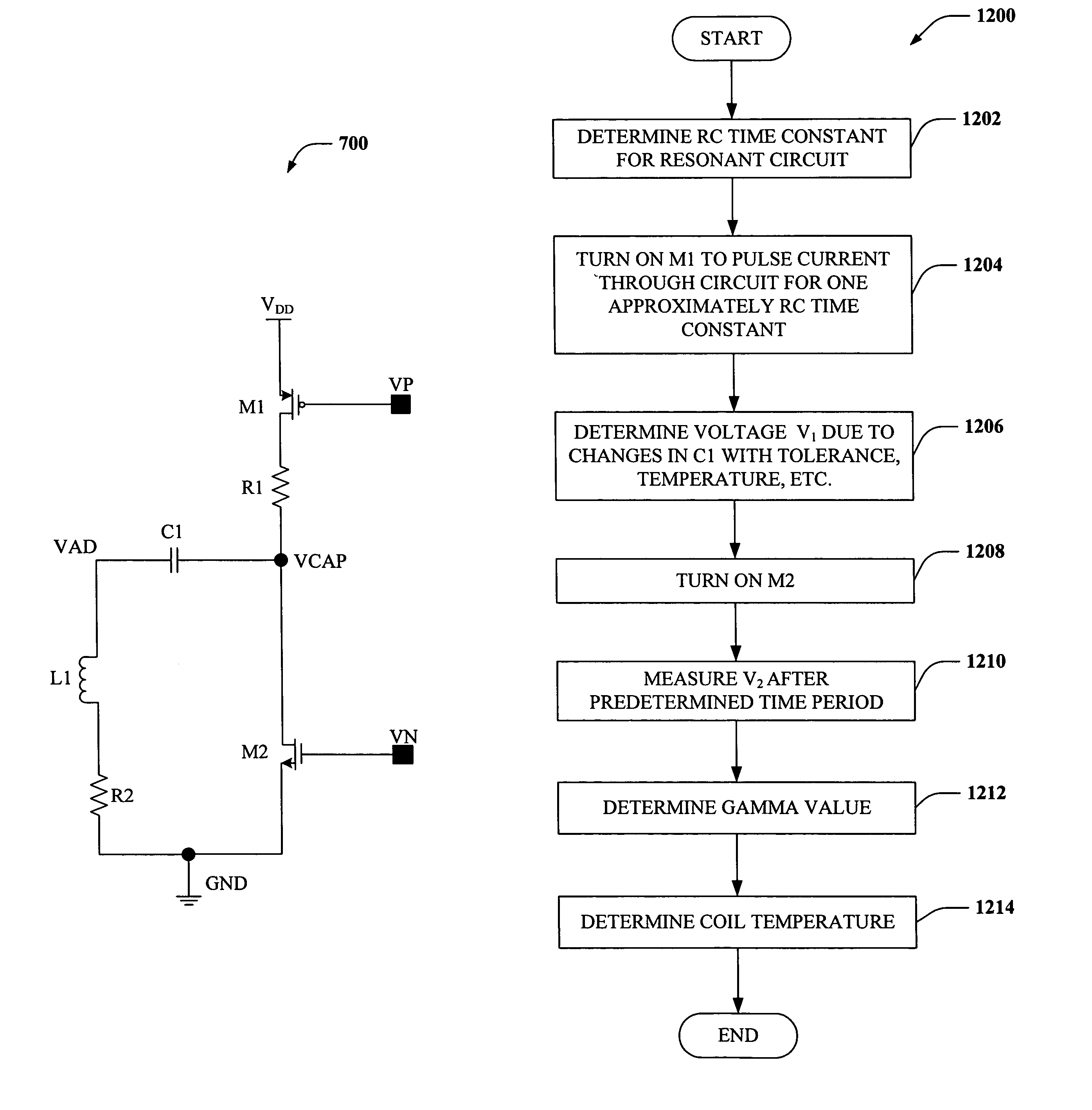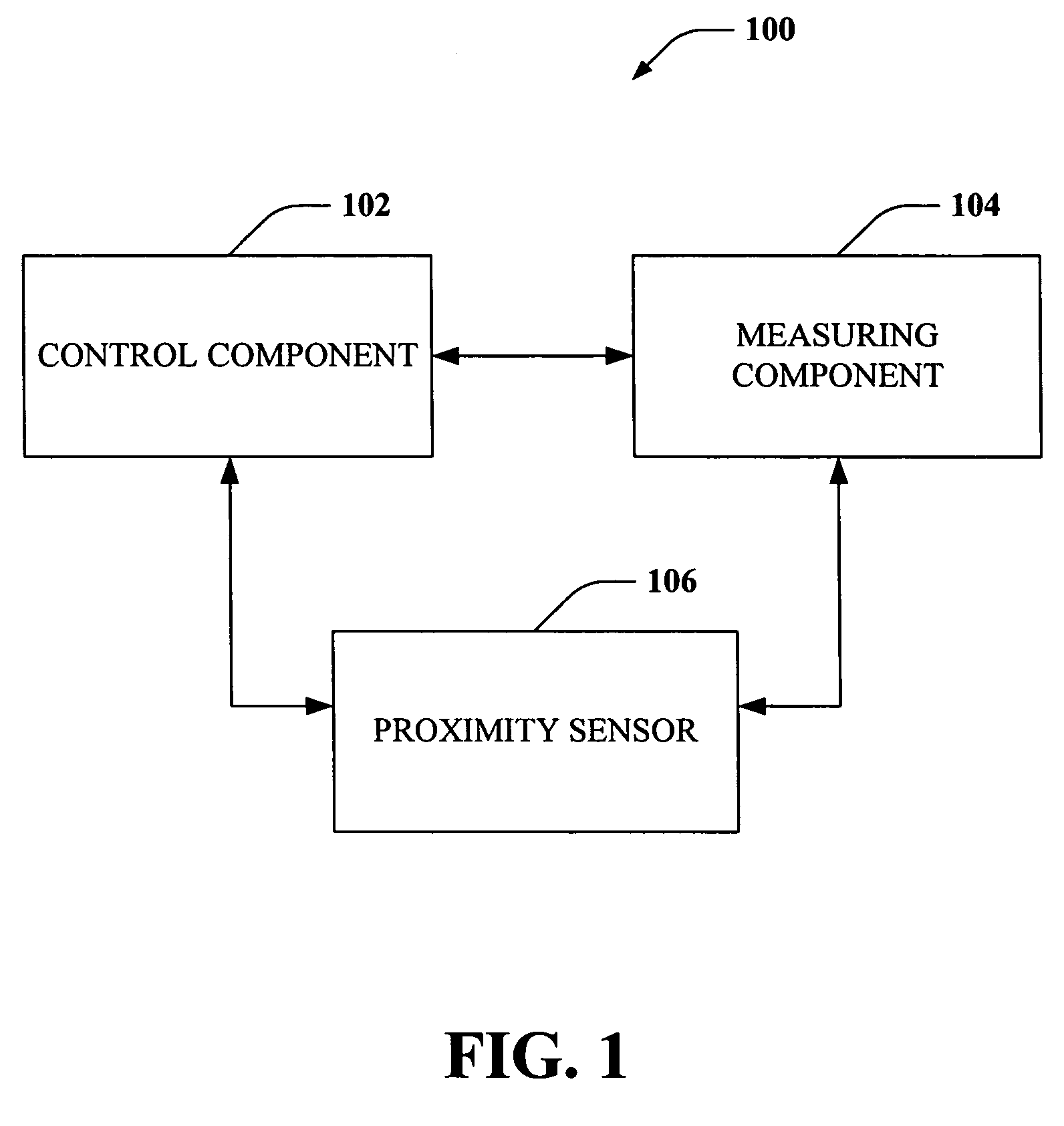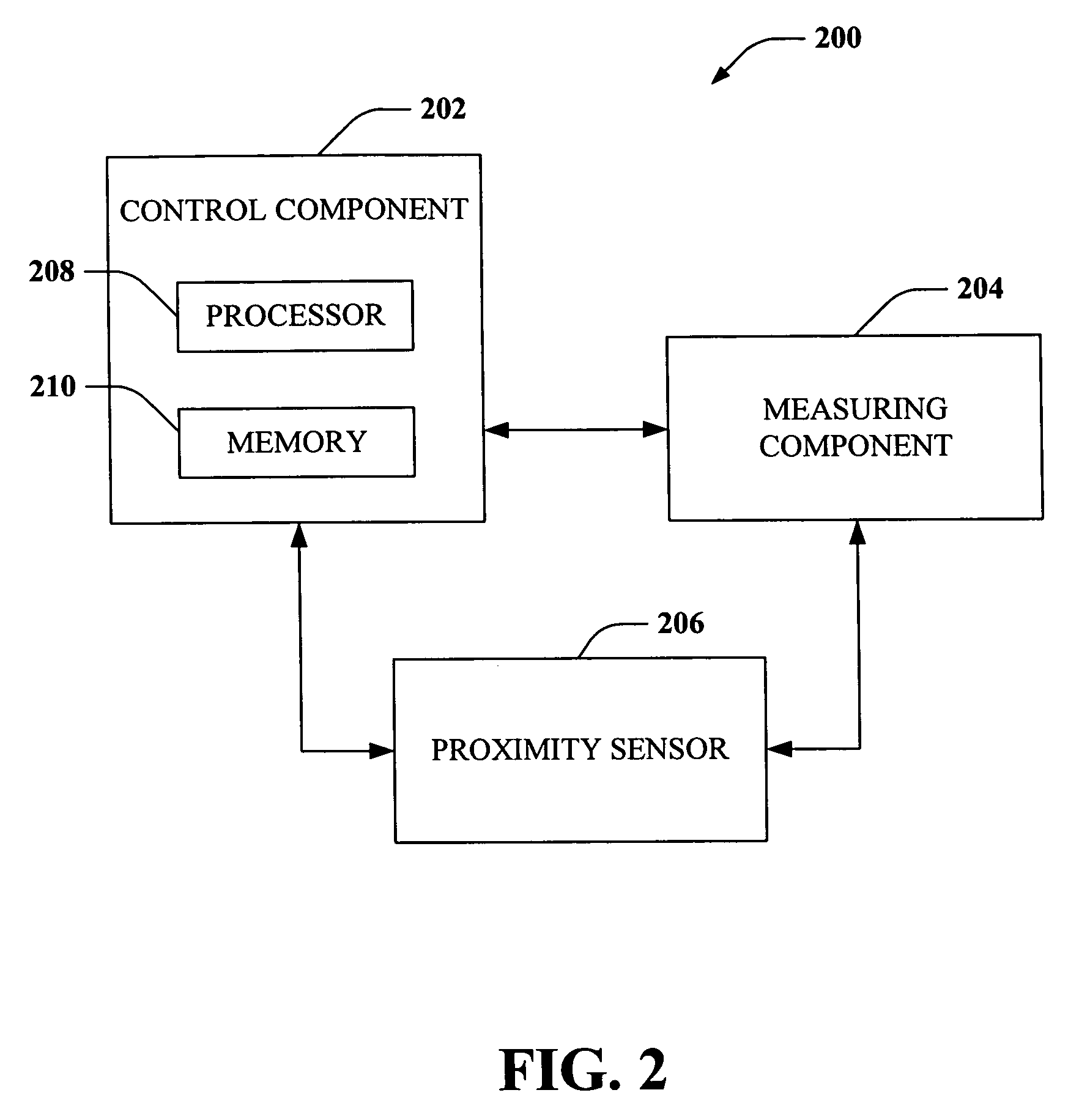Inductive proximity sensor using coil time constant for temperature compensation
a technology of time constant and proximity sensor, which is applied in the direction of magnetic variables, pulse techniques, instruments, etc., can solve the problems of coil inductance and complex conventional circuits, and achieve the effects of facilitating accurate ascertaining, reducing temperature drift effects, and facilitating increased accuracy of proximity sensors
- Summary
- Abstract
- Description
- Claims
- Application Information
AI Technical Summary
Benefits of technology
Problems solved by technology
Method used
Image
Examples
Embodiment Construction
[0026]The present invention will now be described with reference to the drawings, wherein like reference numerals are used to refer to like elements throughout. The present invention will be described with reference to systems and methods for determining coil temperature in a proximity sensor via measuring a time constant of the coil. It should be understood that the description of these exemplary aspects are merely illustrative and that they should not be taken in a limiting sense.
[0027]The term “component” can refer to a computer-related entity, either hardware, a combination of hardware and software, software, or software in execution. For example, a component can be a process running on a processor, a processor, an object, an executable, a thread of execution, a program and a computer. By way of illustration, both an application running on a server and the server can be components. A component can reside in one physical location (e.g., in one computer) and / or can be distributed ...
PUM
 Login to View More
Login to View More Abstract
Description
Claims
Application Information
 Login to View More
Login to View More - R&D
- Intellectual Property
- Life Sciences
- Materials
- Tech Scout
- Unparalleled Data Quality
- Higher Quality Content
- 60% Fewer Hallucinations
Browse by: Latest US Patents, China's latest patents, Technical Efficacy Thesaurus, Application Domain, Technology Topic, Popular Technical Reports.
© 2025 PatSnap. All rights reserved.Legal|Privacy policy|Modern Slavery Act Transparency Statement|Sitemap|About US| Contact US: help@patsnap.com



